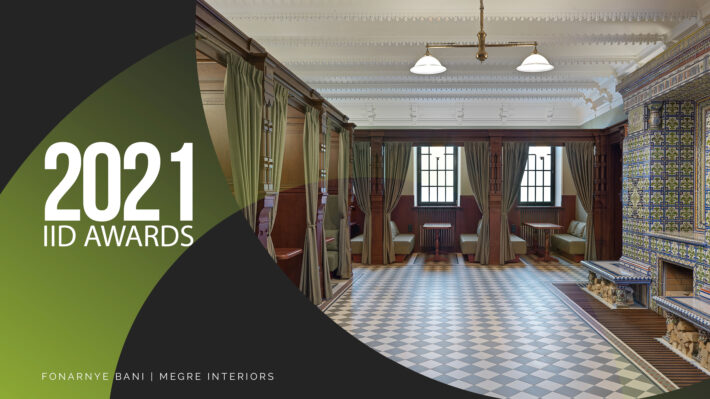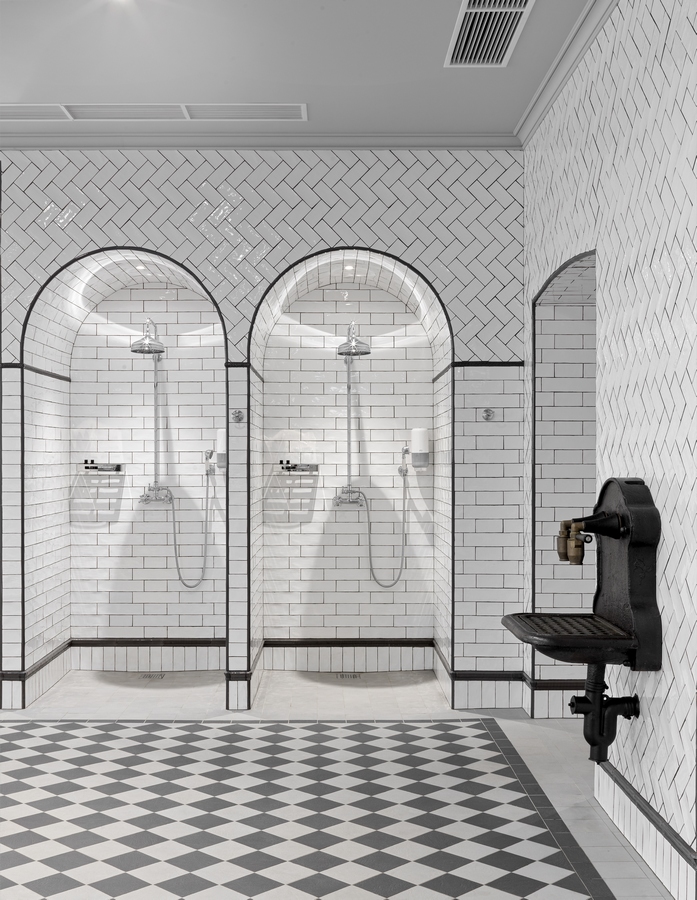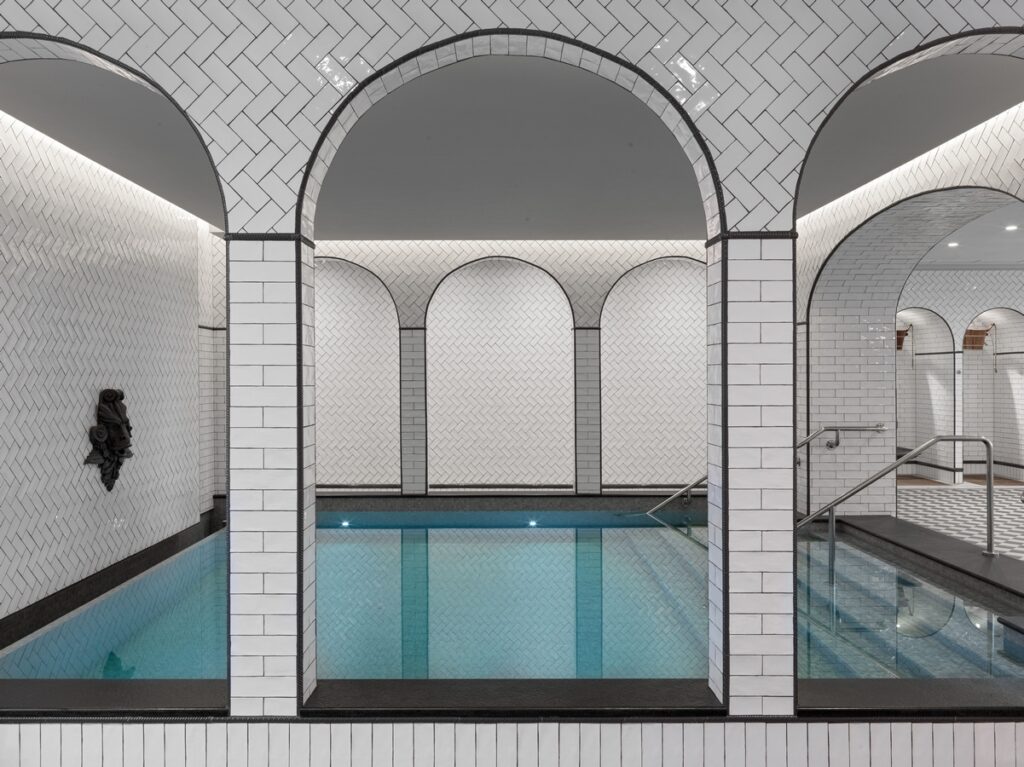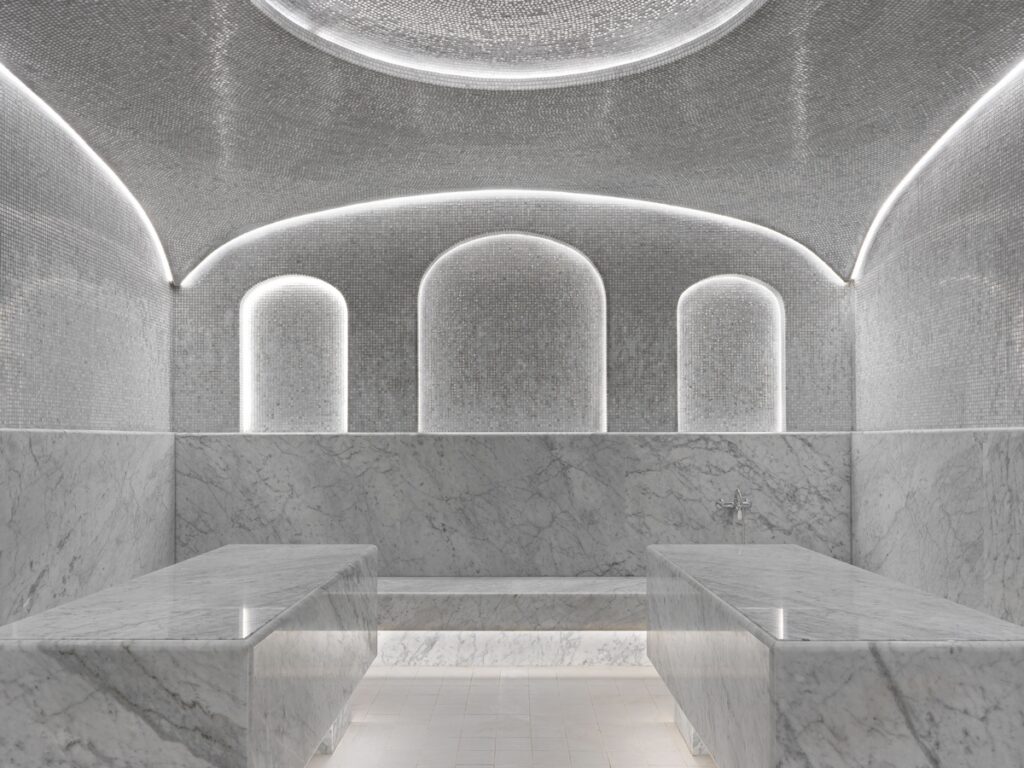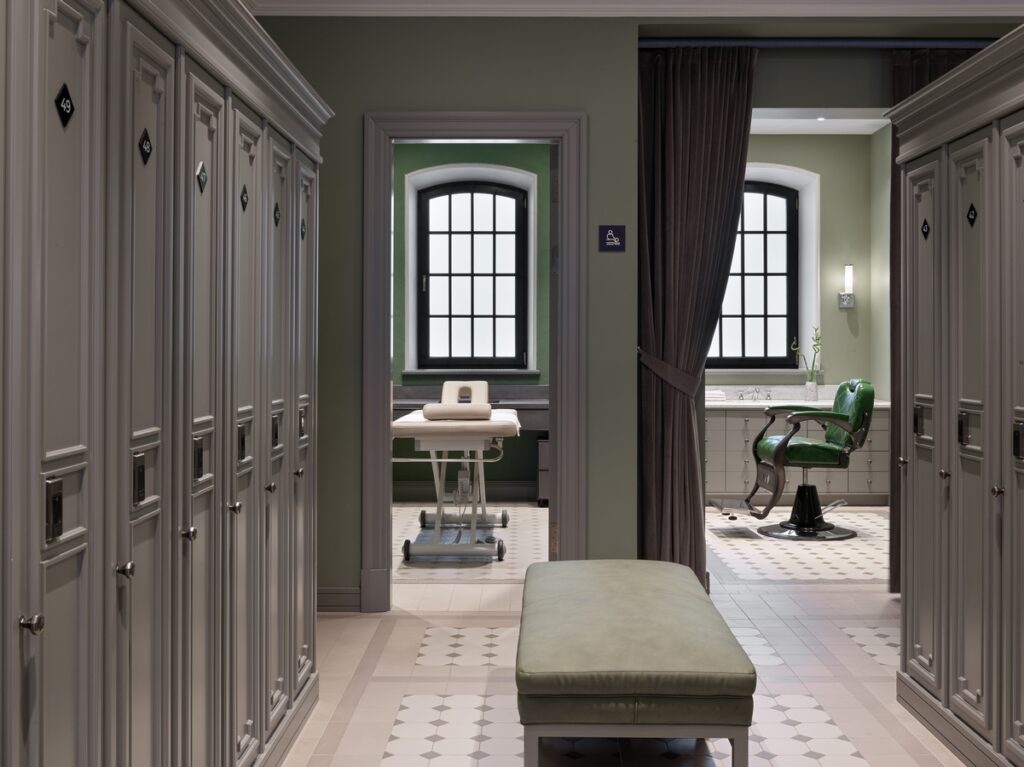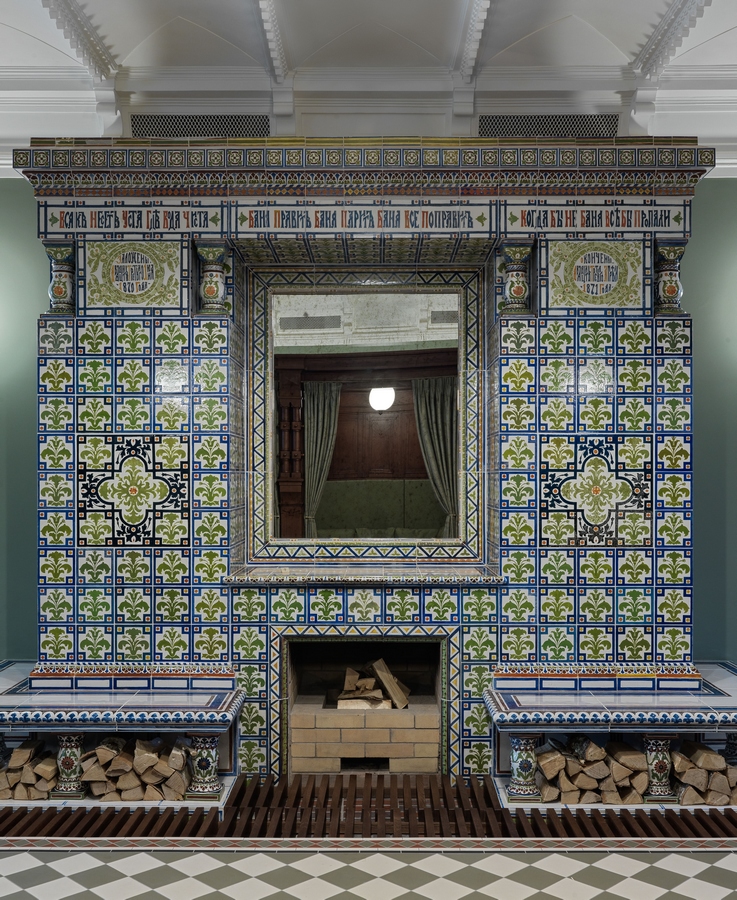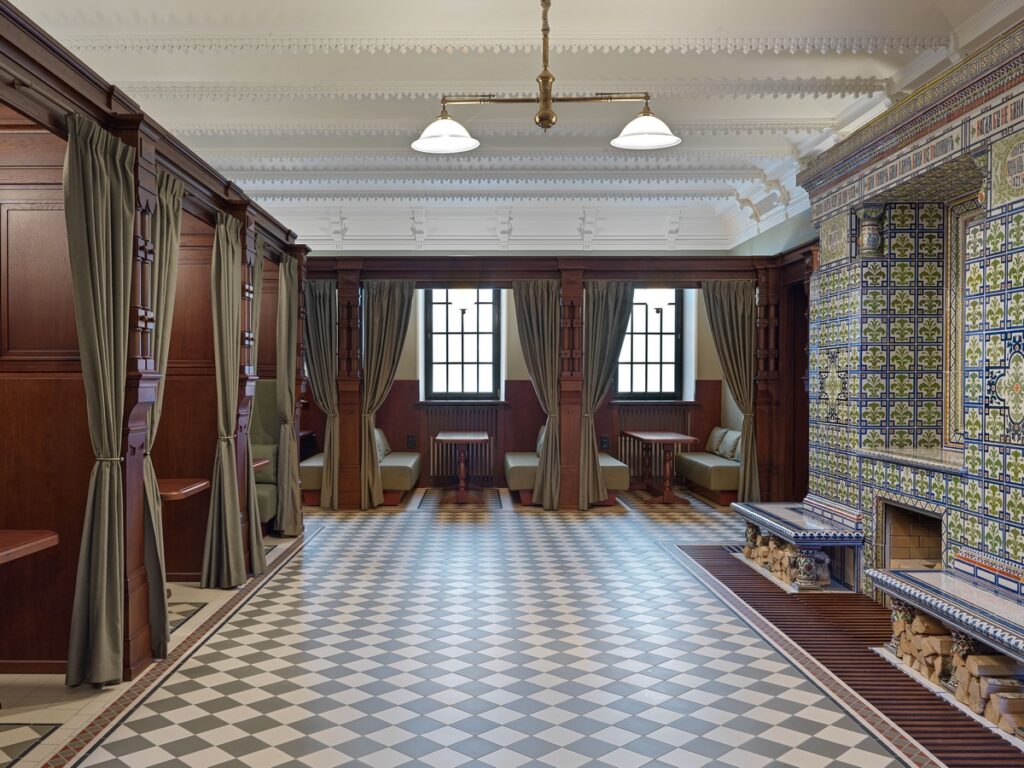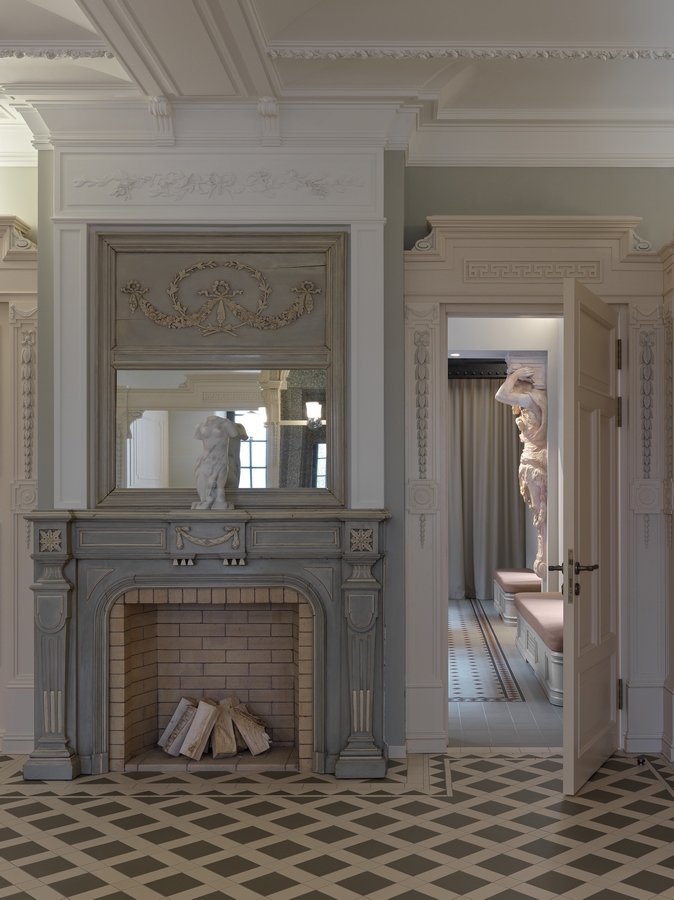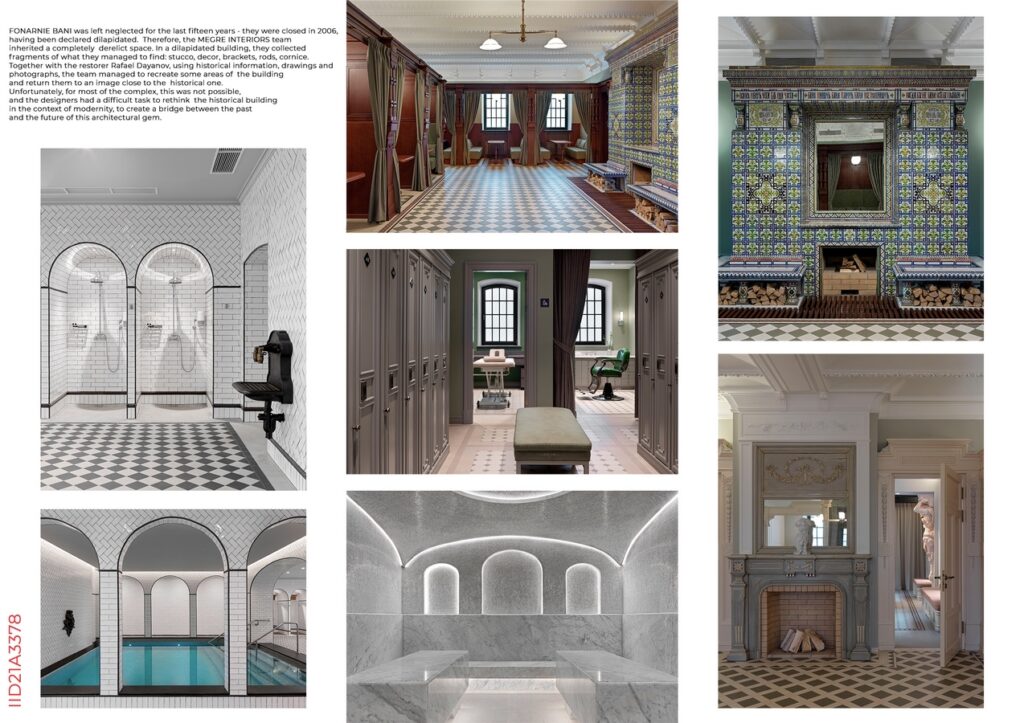Fonarnye Bani, one of the oldest and historically significant bathhouses in St. Petersburg, Russia has opened its doors again after 15 years and a large-scale reconstruction.
Thanks to the efforts of the ideological mastermind of the project, Artem Shakhnazarov, who commissioned the thought after St. Petersburg restorer Rafael Dayanov to restore the listed architectural masterpiece, and MEGRE INTERIORS to create the design concept for its interiors, the Fonarnye Bani, are again a significant point on the map of St. Petersburg.
Interior Design Awards 2022: Discounted Entries Open Now! Save $50
Super Early Discount – 20th January 2022 to 31st March 2022 – $199 = $149
Gold 🏆 Winner
International Interior Design Awards 2021
Fonarnye Bani
Health Care Interior Built
Firm
Megre Interiors
Architect/Designer
Yuna Megre
Design Team
Yuna Megre
Location
Russia, St. Petersburg
Country
Russia
Photographer/Copyright
©Sergey Krasuk, style: Natalia Onufreychuk
THE HISTORY OF THE BATHHOUSE:
The word “bani”, means bathhouse in Russia, where the tradition of public bathhouses is intertwined in the nations history. Voroninskye Bani, popularly known as the “Fonarnye Bani,” were built in 1870-1871. In those days, baths were perceived not so much as a place for washing, but as a public space – where townspeople would meet and discuss news, and fairs would appear in the courtyard where people would have sold gingerbread, kvass, brooms, and cigarettes.
At that time, the Fonarnye Baths stood out from the rest with their magnificent decoration and forefront engineering systems for that period. Everything was built according to the latest word of engineering and science. The owner, Mikhail Voronin, was not only a state councilor and merchant, but also an outstanding biologist. The legendary architect Pavel Suzor, designed the original bathhouse and received a gold medal for this project at the Polytechnic Exhibition in Vienna.
The original masonry was done on Roche cement, which is resistant to dampness, and the vaults on Portland cement, which only became harder from moisture. In the marble pools, the level and temperature could be changed and the water came from its own running artesian well. In addition, Suzor designed a special ventilation system with heated air and a new design furnace that was fired with smokeless Cardiff coal. A bench was set up around the largest stove, which warmed the backs of patrons.
The interior was also impressive – there were magnificent finishes, fountains, vaulted ceilings, and furniture in the style of Louis XVI and the palm trees. This made the bathhouse famous throughout Europe. The sanitary conditions of Fonarye Bani, set the benchmark for the industry. So much so, that in 1879, a decree was issued obliging to take into account new requirements during construction.
Under Soviet rule, a lot changed at the Fonarnye Bani – the original stoves, the cabins in the lounges, most of the decoration were completely dismantled. Even the name “Voroninsky Baths” was replaced with a more modest one – “No. 43”. But among the townspeople, the name Fonarnye baths and simply “Fonari” remained, because the bathhouse was located at the corner of Fonarny Lane and the Moika River.
THE RESTORATION PROCESS:
The bathhouse was left neglected for the last fifteen years – they were closed in 2006, having been declared dilapidated. Therefore, the MEGRE INTERIORS team inherited a completely derelict space. In a dilapidated building, they collected fragments of what they managed to find: stucco, decor, brackets, rods, cornice. Together with the restorer Rafael Dayanov, using historical information, drawings and photographs, the team managed to recreate some areas of the building and return them to an image close to the historical one. Unfortunately, for most of the complex, this was not possible, and the designers had a difficult task to rethink the historical building in the context of modernity, to create a bridge between the past and the future of this architectural gem.
ABOUT THE NEW DESIGN:
To find a balance between historicism and modernity, MEGRE INTERIORS chose the path of purity of design solutions. After all, it is precisely purity and cleanliness that are the cornerstone of a bathhouse, and therefore the harmonious basis of the visual concept. It was important for the designers to draw the guests’ attention to the preserved elements of architecture, proportions, and volumes while creating a cozy, functional space.
Thus, the further the guests move from the entrance to the steam room, the “cleaner” the interior becomes. From a cozy Lobby with rich bardo walls and a carved chocolate wood fireplace to a snow-white Soap Room framed with a thin black line accentuating the historical architecture.
In Soviet times, the entrance to the baths was changed and the impressive promenade of the main staircase was not used. Thanks to the efforts of Artem Shakhnazarov, it was possible to restore the possibility of using the front entrance from Fonarny Lane. At his request, MEGRE INTERIORS recreated the interior of this space using an exact replica of the tiles that were in the building 150 years ago. A fragment of them was found during the dismantling of an old wooden cash register, which had stood there since the 1930s. And also created a boutique of bathing products in the space.
Through the main staircase, guests enter the main Lobby of the baths, in the center of which there is a circular reception designed based on carvings from that historical period. Thus, visitors enter the building directly to the second floor. When developing planning solutions, MEGRE INTERIORS retained communication through the central cross of corridors and stairs created by Suzor, as Yuna Megre, the Principal of MEGRE INTERIORS, felt it is vital to keep the flow of the building the way it was originally intended.
The second floor houses the main lobby, with its impressive fireplace and cozy sofas, a cafe-pub with cast iron tables restored from found engravings and marble walls, men’s and women’s changing rooms, a salon, and a barber shop. On the floor below there are Economy Class and Individual Rooms, which are the different types of baths, and above, a conceptual restaurant.
In the Ladies Changing Chambers, MEGRE INTERIORS created a blush romantic interior filled with elements inspired by the surviving engravings of this space. A large-scale carved fireplace and a central column, as well as fancy cabinetry, create a coziness that is not inherent in changing rooms of a typical bathhouse. The entrance area and the salon are executed in a similar style. Their creation was inspired by jewelry and music boxes, their tenderness, and their romance.
In the Gentlemen’s Changing Chambers on the second floor, it was possible to restore a contemporary of the building – a tiled fireplace and a bronze mascaron with a triton’s head. These pieces hold great importance to the history of the city. The interior of the Gentlemen’s Rest Area was restored according to historical sketches with the utmost precision and awe, and the entrance area was conceived to resemble a similar style and mood.
The furnaces were preserved during the reconstruction. Unfortunately, not from the period of construction by Suzor, but those that remained after the renovation of the 1930s. They are located in the same place, have the same vaults, the same volume, and are loaded with stone. Even the sash has been preserved, but the team nevertheless re-cast their exact copies to ensure their prolonged use. The famous steam rooms were also saved. Cast-iron sinks have also returned to their rightful places, after being ripped out in the Soviet era for being “too fancy”.
The Soap Rooms, the main bathing areas in a public bathhouse, are united by a single aesthetic solution. The minimalist white tiles framed with black edging are designed to create a sense of visual purity and highlight the architecture of the space with its vaults and columns.
Downstairs in the Economy Class, the designers have kept this principle while changing the appearance of the space through the use of different materials. The Individual Class exudes comfort and richness, with its Rest Area,Refectory, and Soap Rooms, so grand in design, that one forgets that one is in a public bathhouse and not in a private merchant’s mansion.
The restaurant on the third floor, also designed by MEGRE INTERIORS, is inspired by the contrast between the heat of the baths and the cold of the Russian winter. Bustling and filled with air, it seems to be shrouded in frost and is a refreshing end to a visit to the Fonarny Baths.
The MEGRE INTERIORS team has devoted 5 years to scrupulous work on the restoration of this project in the center of St. Petersburg and is grateful for the opportunity to create a project that will delight the people of St Petersburg and its visitors for decades to come. The project was appreciated not only by the bathhouse visitors, who generously leave admirable reviews on social media and to the staff, but by various media outlets, and won the AD Design Award within the 2 weeks of opening.
Registrations open… Don’t miss the opportunity to win with your visionary projects.


